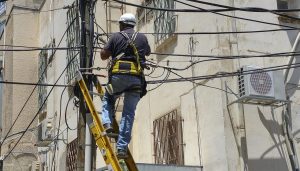Hidden Dangers: The Most Overlooked Home Safety Issues of 2025
Our homes are meant to be our sanctuary, a place where we feel safe and protected. As we enter the year 2025, we are surrounded by advanced technology, endless information, and a fast-paced way of living. However, with all these advancements, we must not forget about the hidden dangers that lurk in the corners of our homes. These overlooked home safety issues can pose a threat to our well-being and that of our loved ones. In this article, we will discuss the most common home safety issues that are often ignored and how to effectively prevent them in the year 2025.
Carbon Monoxide Poisoning
Carbon monoxide is a colorless and odorless gas that can be found in our homes. It is produced by the incomplete burning of fuels such as gas, oil, and wood. Carbon monoxide poisoning is known as the “silent killer” as it can be fatal without any warning signs. According to the Centers for Disease Control and Prevention (CDC), carbon monoxide poisoning accounts for an average of 430 deaths and 50,000 emergency room visits in the US every year.
Prevention tips:
To prevent carbon monoxide poisoning, it is important to have your gas appliances and chimneys serviced yearly by a professional. Additionally, install carbon monoxide detectors in your home and regularly check their batteries. Never use gas-powered tools or equipment indoors and always keep generators outside. In 2025, it is expected that many homes will have smart carbon monoxide detectors that can send alerts to your phone in case of high levels of carbon monoxide.
Mold Growth
Excess moisture and humidity can lead to the growth of mold in our homes. Mold can cause a range of health issues, from allergies to respiratory problems. Furthermore, in the year 2025, with the rise of eco-friendly homes and the use of organic materials, the risk of mold growth will increase. This is because organic materials are more prone to mold than synthetic ones.
Prevention tips:
To prevent mold growth, it is crucial to control the moisture levels in your home. Fix any leaks, use a dehumidifier in areas with high humidity, and regularly clean and dry any areas that are prone to moisture. Additionally, ensure proper ventilation in your home and avoid overwatering indoor plants.
Electrical Fires
In this digital age, it is no surprise that our homes are filled with various electronics and charging devices. However, with increased usage, comes an increased risk of electrical fires. According to the National Fire Protection Association, 47,700 home fires in the US were caused by electrical failure or malfunction in 2019.
Prevention tips:
To prevent electrical fires, avoid overloading outlets and use surge protectors. Examine your electronics regularly for any signs of wear and tear, and replace any damaged cords immediately. It is also important to turn off and unplug appliances when not in use.
Slip and Fall Accidents
Slip and fall accidents may seem like a minor issue, but it can lead to serious injuries, especially for older adults. In 2025, about 20% of the US population is expected to be 65 years and older, making it crucial to pay attention to this overlooked home safety issue.
Prevention tips:
To prevent slip and fall accidents, it is essential to keep walkways clear and free from clutter. Repair any loose or uneven flooring, and use non-slip mats in areas that are prone to water, such as bathrooms and kitchens. Furthermore, consider installing grab bars and lighting in stairways and hallways to make navigation easier for older adults.
Poor Indoor Air Quality
Indoor air quality can have a significant impact on our health, yet it is often overlooked. According to the Environmental Protection Agency, indoor air can be up to 5 times more polluted than outdoor air. Poor indoor air quality can worsen allergies, asthma, and other respiratory problems.
Prevention tips:
To improve indoor air quality, regularly clean and dust your home, vacuum carpets and rugs, and change air filters. Consider investing in an air purifier for your home and ensure proper ventilation in all rooms. In 2025, it is expected that smart home systems will include air quality monitoring and purification features, making it easier to maintain good indoor air quality.
Our homes are our refuge, and it is crucial to take all necessary measures to ensure their safety. By addressing these often overlooked home safety issues in 2025, we can create a safer and healthier environment for ourselves and our loved ones. Remember to regularly check and maintain your home, and embrace technology when it comes to home safety measures. Let’s work towards making our homes the safest and most comfortable place to be in 2025 and beyond.







